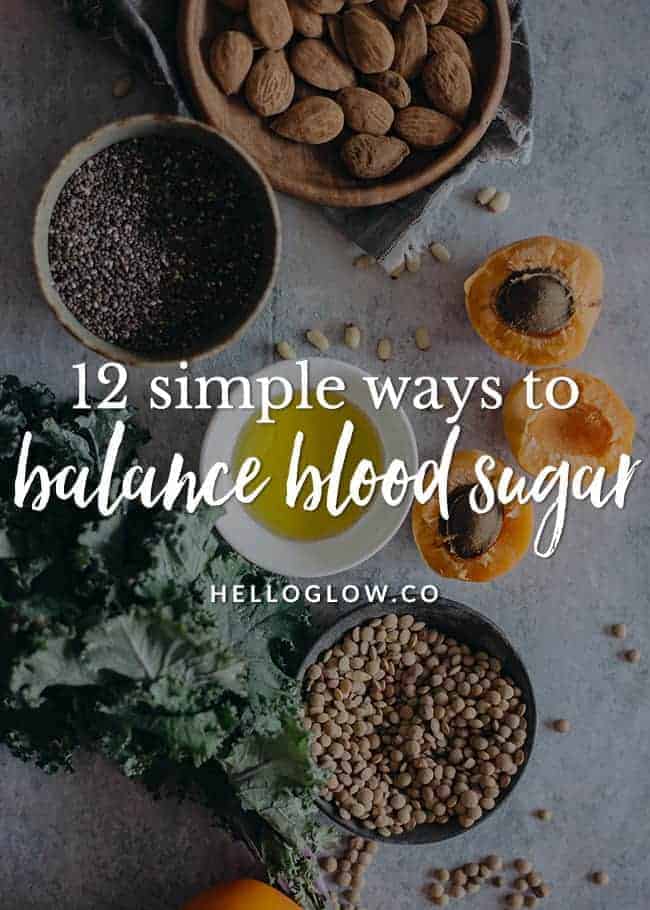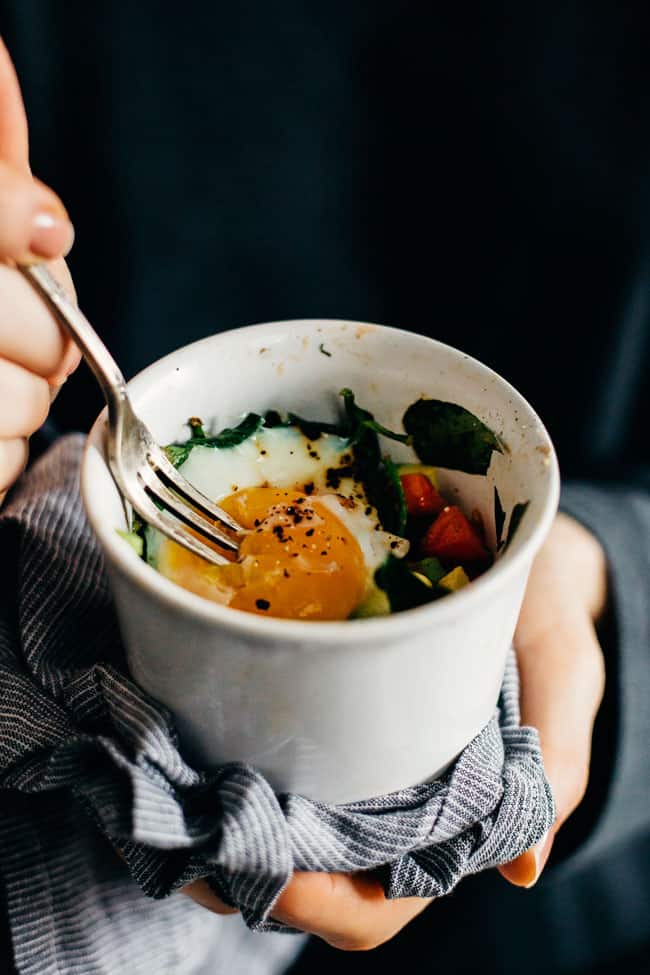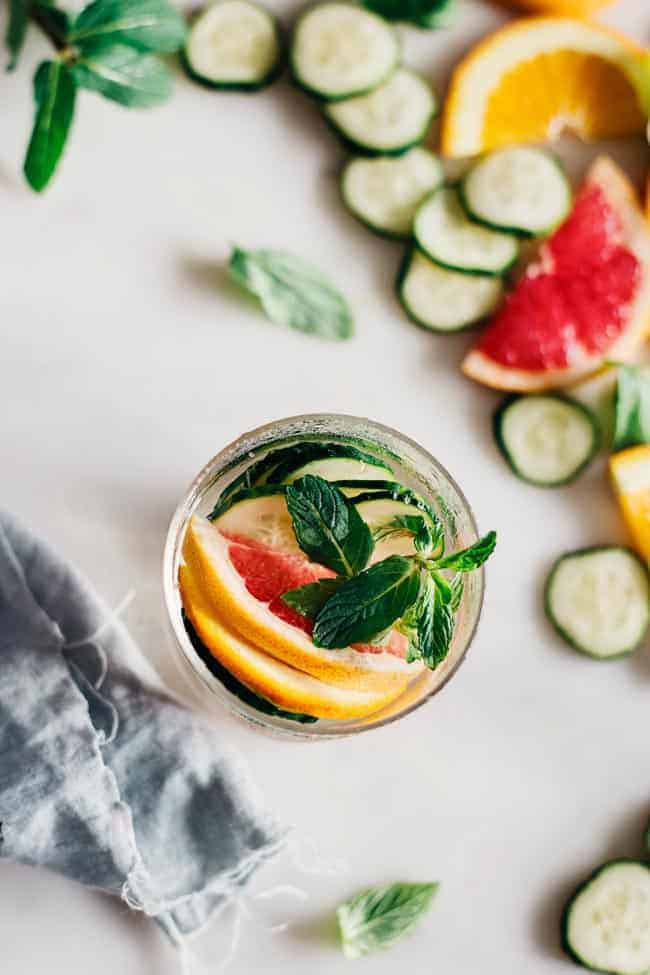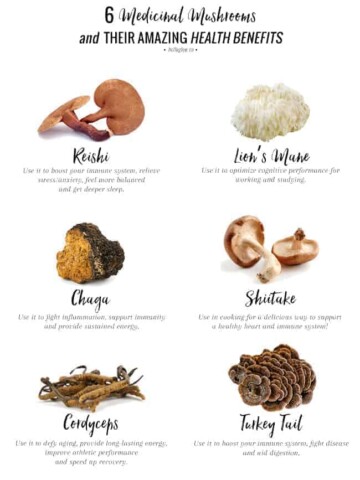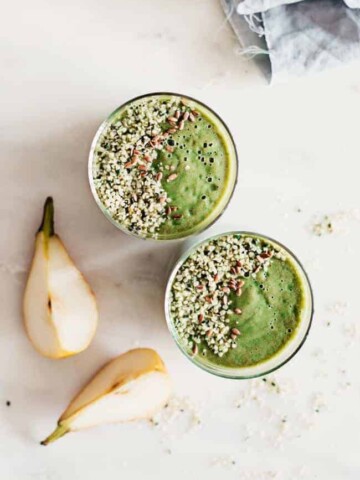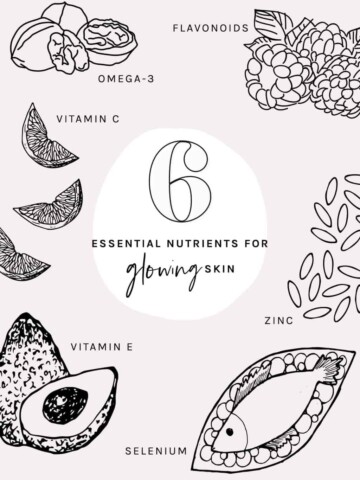Do you regularly experience food cravings, mood swings, irritability, or fatigue? If so, you may have a blood sugar imbalance.
According to the United States Centers for Disease Control and Prevention (CDC) 2020 statistics, 34.2 million Americans have diabetes, out of which 7.2 million are undiagnosed—that’s 21.4% of people with diabetes in the U.S that don’t even know it! [source]. And type 2 diabetes, the preventable one, constitutes over 90% of all diabetes cases worldwide [source].
Maintaining healthy blood sugar levels is crucial for optimal health and minimizes your risk of chronic conditions such as diabetes, metabolic syndrome, Alzheimer disease, and heart disease [source].
Understanding Blood Sugar
When you eat sugars and simple carbohydrates, these foods release glucose into the bloodstream very quickly, spiking your blood sugar. This spike stimulates the pancreas to produce excess insulin, which escorts the sugars out of the bloodstream and into the cells.
Over time, when insulin levels are driven up over and over several times a day (due to too much sugar in the blood), the pancreas gets worn out and cells become resistant to insulin’s effects. Cells are not able to accept any more sugar, leaving the blood sugar to remain elevated.
This excess sugar in the blood keeps blood sugar levels unnaturally high, and insulin ends up storing it as fat. This can lead to increased abdominal fat, weight gain, and unhealthy cholesterol. If left untreated, this eventually results in type 2 diabetes.
As you can see, it’s not a good situation! But the good news is that it can be reversed through a healthy diet and lifestyle that balances your blood sugar and insulin requirements. Below are some strategies to help you do just that!
12 Ways To Balance Blood Sugar
1. Learn about the glycemic index
Foods low on the glycemic index [source] release energy slowly into the bloodstream and cause only minor changes in blood sugar levels. These include animal protein, nuts and seeds, oils and fats, beans and lentils, whole grains, many vegetables, and some fruits (berries and stone fruits are best).
A few examples of high glycemic foods are bread, crackers, corn, white rice, white potatoes, muffins, cookies, fruit juices, and sports drinks. Minimize these foods as much as possible, but if you are going to eat them, have them unprocessed in their natural state (e.g., eat a real potato instead of potato chips) with their natural fiber intact and pair them with foods high in fiber or protein to slow down the injection of sugar into your bloodstream.
2. Eat three well-balanced meals per day
This is crucial to support blood sugar stability. To build a balanced meal, include all three macronutrients: protein, carbs, and fat.
Pick a protein, such as fish, chicken, meat, eggs, beans, tempeh, or collagen protein powder. Include a natural source of whole food carbohydrates, such as vegetables, fruits, or whole grains. Then add a source of healthy fats like avocado, nuts, or seeds [source].
3. Don't skip breakfast
Breakfast sets your metabolic tone and lays the foundation for your blood sugar balance throughout the rest of the day. Aim to eat within 90 minutes of waking up.
Make sure your breakfast includes protein, fiber, and fat, as these satiating macronutrients release energy slowly, keeping you full longer and your blood sugar stable. Try these easy BLT egg cups or this sweet potato breakfast hash.
4. Eat more pungent, bitter, and astringent foods
Including these foods in your diet a little more often will help balance blood sugar and offset your addiction to sweets. Pungent herbs and spices include basil, cinnamon, cumin, chili, garlic, ginger, pepper, oregano, thyme, and turmeric.
Bitter and astringent fruits and veggies are things like leafy greens (think: arugula, collards, dandelion), celery, broccoli, beans, lentils, apples, and pomegranate seeds.
5. Avoid the refined sugar roller coaster
Refined sugars include white sugar, corn syrup, high fructose corn syrup, sucrose, dextrose, and fructose. These, along with processed carbs like pasta, bread, cereal, cookies, bagels, and chips, cause your blood sugar to spike up and then quickly crash.
This crash, aka hypoglycemia, is a state of low blood sugar that results from the insulin spike, which can bring on various negative symptoms like brain fog, difficulty concentrating, feeling “hangry,” anxious, and fatigued. It's also often accompanied by cravings for more carbs and sweets or caffeine as a “pick-me-up.” Talk about a blood sugar roller coaster!
6. Get the sweet taste from vegetables and fruits
We all crave the sweet taste every once and a while. Rather than bombarding your body with processed sugar and inflammatory refined grains, add naturally sweet whole vegetables and fruits to your diet to satisfy your sweet tooth.
Sweet vegetables include sweet potatoes, yams, parsnips, beets, carrots, onions, and winter squashes. And the fruits—well, you know it’s pretty much all of them!
These are excellent and nutritious sources of complex carbohydrates to eat as part of a balanced meal. When eaten in their whole form (unprocessed and not juiced), their high fiber levels slow down the digestion process, keeping your body’s insulin needs balanced because there are no sugar spikes [source].
Other beneficial effects on diabetes risk from including more plant foods in the diet include weight loss [source] and appetite suppression [source].
7. Avoid sweet drinks
Drinking a sweet drink is like hooking yourself up to an IV of sugar because there is nothing to slow down its release into the bloodstream. A 12-ounce Coke contains 39 grams of sugar, which equates to about 10 teaspoons of table sugar (4 grams of sugar equals 1 teaspoon)!
Many “healthy” beverages have almost as much. A bottle of Vitamin Water has 31 grams, and 8 ounces of orange juice has 24 grams (and that’s how many teaspoons of sugar? 7-¾ and 6, respectively!).
At the store, read labels to check the sugar content, even on things like yogurt drinks and green juice (pretty much everything that has a label). Plain, filtered, or naturally flavored water should be your best friend. Also, herbal teas are great! My personal favorite is rooibos chai.
8. Eliminate artificial sweeteners
If you thought sugar was bad, sugar substitutes are worse! Artificial sweeteners, such as saccharin (Sweet’N Low), aspartame (Equal), and sucralose (Splenda), send a sweet taste to the brain and never deliver any real energy to the body. This creates an even stronger message of hunger and desire for sweets, leading to sugar cravings all day long.
Despite being calorie-free, artificial sweeteners have been found to actually increase weight gain as they disturb metabolic hormones like leptin and insulin. Most artificial sweeteners are made of excitotoxins that over-stimulate, exhaust, and deplete the nervous system. And some are even carcinogenic! Read labels and ditch all “diet” drinks and foods!
9. Get your fiber
Most people are well aware of the recommendation to eat more fruits and veggies in their diets to stay healthy [source]. Yet less than 10% consume even close to the recommended amounts [source].
The phytonutrients, vitamins, and other healthful components found only in plants are exceedingly beneficial for maintaining the body systems. But one thing sometimes neglected when discussing these healthy foods is that they are the only foods that contain fiber (foods derived from animals have zero fiber)!
So what does that have to do with your blood sugar? Studies have shown that a higher fruit and vegetable intake actually reduces the risk of type 2 diabetes.
It turns out that, among other things, fiber is essential to blood sugar balance. As already mentioned, dietary fiber delays the absorption of sugars, preventing the oversecretion of insulin that eventually leads to insulin resistance, the hallmark of type 2 diabetes [source].
Additionally, you end up consuming fewer calories with high-fiber meals because the fiber takes longer to chew and fills you up before you overindulge. This gives your satiety signals time to get through and let you know when you’ve had enough [source].
10. Prioritize sleep
Sleep deprivation wreaks havoc on blood sugar. Not getting enough sleep reduces glucose tolerance, meaning your cells have a harder time taking up glucose, which leads to higher blood sugar levels.
The other problem with inadequate sleep is that you eat more when you’re tired because your body is desperate for energy. And usually, you want to eat sugary, carb-y foods that will spike blood sugar levels.
11. Consider nutritional supplements
Cinnamon and Gymnema sylvestre are two of my favorite supplements to support healthy blood sugar levels. Cinnamon is a delicious and effective way to lower fasting blood glucose.
Half a teaspoon of cinnamon a day has been shown to significantly reduce blood sugar levels and triglycerides in people with type 2 diabetes [source]. I love sprinkling cinnamon on oatmeal, in smoothies, and on roasted sweet potatoes!
Gymnema sylvestre is known as “sweet destroyer” because it contains substances that block sugar’s signaling from the taste buds and absorption through the intestinal wall [source]. As a result, cravings are reduced, and natural blood sugar highs and lows are neutralized. Always speak with your healthcare provider before starting any new supplements.
12. Exercise daily.
Exercise reduces blood sugar by improving glucose metabolism. It helps the body usher sugar out of the bloodstream and into the tissues and muscles to be used as fuel. Exercise (like resistance training on a ball or working the arms with a band) also helps build muscle, and the greater your lean body mass, the better your body will be able to control blood sugar levels.
This article was medically reviewed by Dr. Gina Jansheski, a licensed, board-certified physician who has been practicing for more than 20 years. Learn more about Hello Glow's medical reviewers here. As always, this is not personal medical advice and we recommend that you talk with your doctor.
Photos by Ana Stanciu
Frequently Asked Questions
What is blood sugar?
Blood sugar, also known as blood glucose, refers to the amount of sugar or glucose present in the bloodstream. It is the primary source of energy for the body's cells and plays a crucial role in various bodily functions.
How important is it to maintain healthy blood sugar levels?
Maintaining healthy blood sugar levels is essential for overall health and well-being. Imbalanced blood sugar levels, either too high or too low, can have adverse effects on the body, including increased risk of diabetes, heart disease, kidney damage, and other health complications.
How can I regulate blood sugar levels naturally?
There are several ways to naturally regulate blood sugar levels, including following a healthy diet that is low in refined carbohydrates and sugary drinks, consuming high-fiber foods and healthy fats, managing stress, getting regular exercise, and improving insulin sensitivity through lifestyle changes.
What are the risks of having high blood sugar levels?
High blood sugar levels, also known as hyperglycemia, can lead to various health risks, including increased risk of type 2 diabetes, heart disease, kidney damage, nerve damage, and other serious health complications. It is crucial to manage blood sugar levels within the healthy range to avoid these risks.
What are blood sugar spikes?
Blood sugar spikes, also known as blood glucose spikes, occur when blood sugar levels rise sharply and quickly after consuming high-carbohydrate or high-sugar foods and drinks. Blood sugar spikes can strain the body's ability to produce enough insulin to regulate blood sugar levels, leading to imbalanced blood sugar levels and potential health risks.
You can prevent blood sugar spikes by following a healthy diet that is low in refined carbohydrates and sugary drinks, consuming high-fiber foods and healthy fats, monitoring portion sizes, avoiding sugary snacks and desserts, and staying physically active.
What are healthy fats and why are they important for balancing blood sugar?
Healthy fats, such as those found in nuts, seeds, avocados, and fatty fish, are important for balancing blood sugar because they help slow down the absorption of sugar into the bloodstream, preventing rapid spikes in blood sugar levels. Including healthy fats in your diet can help regulate blood sugar levels and support overall health.
What is insulin sensitivity and why is it important for blood sugar regulation?
Insulin sensitivity refers to how responsive the body's cells are to insulin, a hormone that helps regulate blood sugar levels by allowing sugar to enter the cells for energy. Improved insulin sensitivity means that the body's cells are more effective at using insulin to regulate blood sugar levels, which is important for overall blood sugar regulation and diabetes prevention.
136
